The information below will help you somewhat shape the ability of the Toyo Observe GSi-5 to operate on different surface conditions.
I’ve used many terrain tests and done it many times to come up with the closest estimates. Through this, you can quickly get a proper judgment as to whether the tire is suitable for use or not.
Dry TractionThe Toyo Observe GSi-5’s dry surface movement performance is generally acceptable for users.
We all know snow tires usually only work best on snowy surfaces or in most slippery conditions. But with Observe GSi-5, the tire’s zero traction still serves us well in basic mobility needs.
The ribbed design in the middle of the tire ensures that the direction can run most stably on a straight line.
Most importantly, the ribs also help improve the traction, enhanced traction, and the tire’s stability.
Meanwhile, the groove mechanism will remove obstacles on the road. Not only when moving fast, but even when you operate the car at average speed, obstacles are also dangerous agents.
To guarantee the safety of users, Toyo has taken advantage of the existing system of trenches to conduct water to remove soil and rock on the road.
The grip-enhancing compound also contributes significantly to the performance that was not so outstanding on this product.
After several trips on flat roads and highways, I draw simple conclusions about the tire’s dry performance. The grip isn’t unique, but it’s not too bad either.
The acceleration of the Toyo Observe GSi-5 is not good when the traction is unstable.
Finally, the stability on the move is quite good, and you can be confident that the car can perform quite well when equipped with this quality tire model.
Wet GripThere’s not much of a difference between wet roads and snowy surfaces at all.
Even in many cases, traveling in snowy areas causes us to face damp and flooded roads because of melting snow.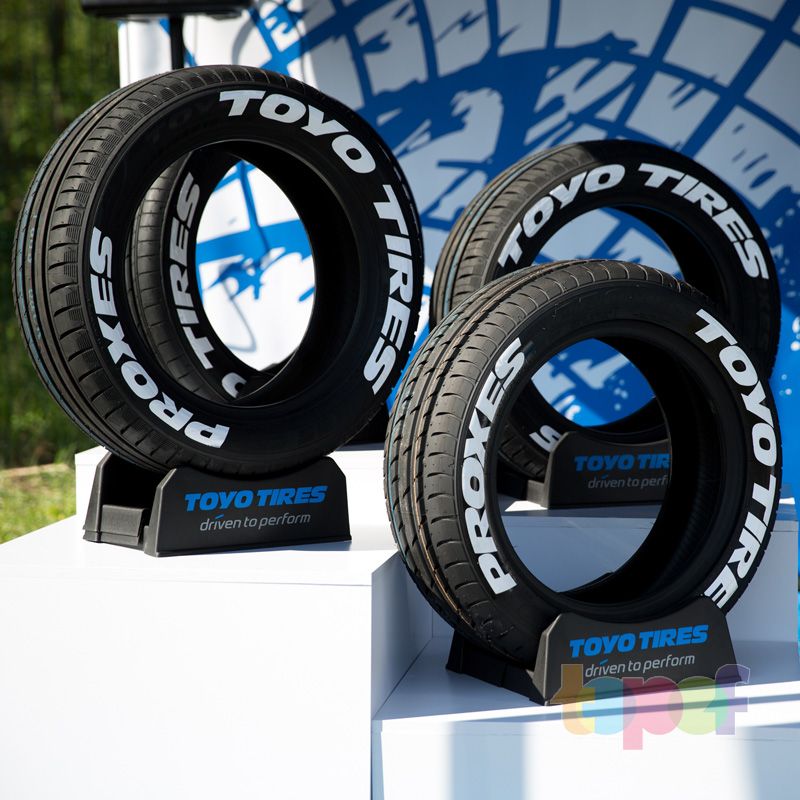
So the excellent snow performance of the Toyo Observe GSi-5 also improves the tire’s safety on wet surfaces.
The most noticeable improvement is the appearance of carbonic powder absorbing in the tread fibers. The essence of this powder is from bamboo charcoal, an outstanding material with excellent moisture absorption.
It helps to improve the ability of the tire surface to absorb moisture, thereby maximizing travel performance.
Complex grooves moving along the tire surface will act as drainage grooves to prevent hydrolysis.
HandlingControlling a vehicle on the snow surface is tricky, but with the Toyo Observe GSi-5, you can have peace of mind. Tire technologies have contributed to providing stable control through increased agility.
For example, the multi-wave sipe can significantly increase flexibility by allowing the tread to flex more. This mechanism also controls and ensures the curvature within the allowable level to avoid causing tire vibration.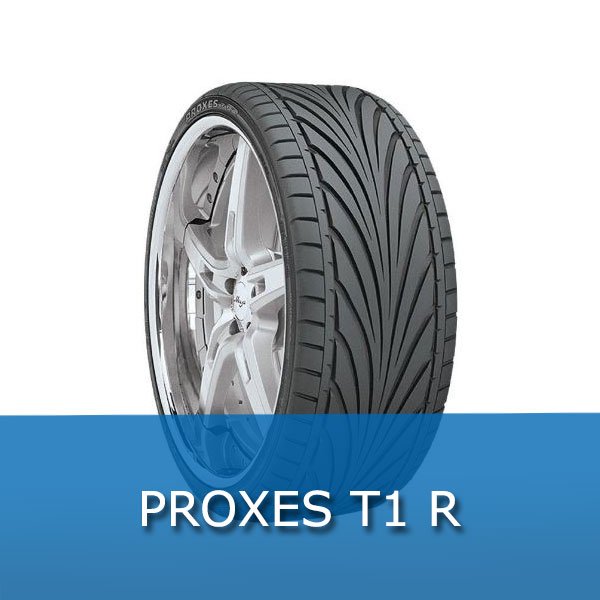
With Toyo Observe GSi-5, you don’t have to worry about the vehicle skidding when braking or the braking distance being too long. In addition to control, the excellent grip of the tire is also a quality factor that makes stopping the car safer.
In this version, the spider sipe stretches in many different directions providing the ability to increase grip in all orders.
When the grip is more comprehensively enhanced, no matter which direction you move the car, the performance results will be the same.
Plus, the swing sipe that provides the edges with a firm grip on the thick snow surface in multiple directions is an excellent tire protection mechanism.
Check this video now to get some more virtual reviews:
Is It Worth Your Money?Toyo Observe GSi-5 is one of the best choices for us to be able to move in snowy terrain significantly when the thickness of the snow layer increases.
The product is also suitable for moving through wet areas with a lot of rain or snow melt. If you don’t care too much about dry performance, this is a worthy choice for us to spend money to own and use.
After using it for a while, I suggest that this version is completely safe and worth testing in the winter.
With a mid-range price, the Toyo Observe GSi-5 is always one of the candidates with the perfect performance among the ones I have tested.
Pros And Cons Of Toyo Observe Gsi-5Pros
Cons
Updated:
I had the opportunity to evaluate one of Toyo’s latest winter tire offerings last winter, and I came away thoroughly impressed. The Toyo Observe GS-i 6 is a stud-less performance tire that has been designed and engineered to provide light trucks and sport utility vehicles with surefooted traction and ride comfort.
The Toyo Observe GS-i 6 is a stud-less performance tire that has been designed and engineered to provide light trucks and sport utility vehicles with surefooted traction and ride comfort.
After spending a little more than four months with these fitted to my truck I came away feeling that this tire is perfectly suited for the ever changing weather and road conditions that characterize, in this instance, a harsh Canadian winter.
The tires were fitted to a low mile, first generation Honda Ridgeline by professional installers. The truck had recently been given a new suspension and brakes, and a four-wheel alignment was performed shortly after the new tires were fitted.
I live in British Columbia, and our regulations require that you operate your vehicles with a proper winter tire (or chains) from October 1 to March 31, but many highways through mountain passes and or high snowfall areas extend this period to April 30.
Due to complications related to the Covid-19 pandemic the tires went on a little later than expected, but I did manage to run them for a period of time beginning in late December until the end of April. During this test period I managed to put 2,485 miles or 4,000 kilometres on the tires in a wide variety of road, weather and terrain conditions.
The first thing I noticed about the Observe GSi-6 is that they were really smooth running and quiet. Prior to these I was running a set of Cooper Discoverer A/TW tires that had served me well for a number of years, but that model has a much more aggressive all-terrain tread design which tends to create a substantial amount of road chatter at speed.
In fact, the Toyo Observe GSi-6 may be the quietest dedicated winter tire that I have experienced, and given the number of press vehicles (of all shapes and sizes) that I have had the opportunity to test on winter rubber this is a pretty impressive claim for the Toyos.
I like to begin a tire test with a long distance run of at least 310 miles or 500 kilometres and my recent pattern has been to make the journey up the twisty Fraser Canyon to Spence’s Bridge followed by a 37 mile / 60 kilometre sprint along Highway 8 as it undulates beside the Nicola River through rolling hills and past scenic hoodoos.
Toyo Observe GSi-6. Photo: Russell PurcellFrom Merritt I take Highway 5A to Princeton, before following the Crowsnest Highway back to Hope and then finally using Highway 7 to make my way home to the Fraser Valley. This trip can be a challenge for a tire any time of the year as the road surfaces are irregular and get beaten up by heavy truck traffic and plows. Add to this the fact that the sudden elevation and weather changes typical of mountain passes can wreak havoc on both traction and braking abilities.
During the course of my day long journey the Toyo Observe GSi-6 tires performed flawlessly despite being asked to navigate over rough roads at highway speeds.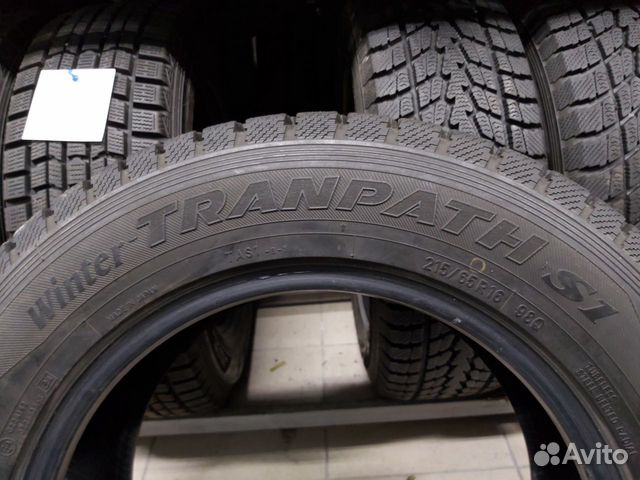 They faced a deluge of rain between Agassiz and Hope but the GSi-6’s tread pattern proved very adept at evacuating standing water away from beneath the tire.
They faced a deluge of rain between Agassiz and Hope but the GSi-6’s tread pattern proved very adept at evacuating standing water away from beneath the tire.
This is accomplished through the use of a combination of wide grooves and sipes that provide an efficient means for excess water and slush to be cleared away so that the tire can retain grip with the road surface.
the Toyo Observe GSi-6 may be the quietest dedicated winter tire that I have experienced, and given the number of press vehicles (of all shapes and sizes) that I have had the opportunity to test on winter rubber this is a pretty impressive claim for the Toyos.
I like to use this route to evaluate performance cars as it offers an incredible mix of twists, turns, dips and dives, and in the winter these conditions will quickly reveal the inherent strengths and weaknesses of a tire. The Fraser Canyon was slick and icy in areas where the road was sheltered from sunlight, and some areas beyond the tunnels had obviously been neglected by the road crews as a deep blanket of fresh snow was beginning to obscure the highway.
The Toyos relentlessly pushed forward and I found that they climbed and cornered with confidence, and managed to maintain traction with relative ease. The journey from Spences Bridge to Merritt was harrowing at times due to tremendous crosswinds that seemed to surge through the valley and over the river, but my nerve and visibility were tested more than the tires which continued to cut through the slush and snow.
As I made my way to Princeton along Highway 5A I started to see vehicles that had been abandoned alongside the road due to worsening conditions, mechanical failure or driver error. The sugar beet de-icing treatment that is used on many of this region’s highways was obviously in need of a refresh so I did feel a little sliding under braking in a few less travelled sections of the road, but as this section is largely flat, it served as a reminder to maintain my focus rather than inducing much concern.
Toyo Observe GSi-6. Photo: Russell PurcellAround Princeton the road had developed a thick crust of packed snow and ice with two distinct wheel channels cut through to the surface by large truck traffic. As the temperature dropped these deep grooves become slick and can easily trap the tires of a passenger vehicle guiding its direction of travel and robbing the driver of some control.
As the temperature dropped these deep grooves become slick and can easily trap the tires of a passenger vehicle guiding its direction of travel and robbing the driver of some control.
I elected to ride with my wheels running on the dirty snow surface that resides above and parallel to these channels. This is because this narrow plateau retains a healthy dose of the gravel and sand that is deposited by the highway crews whenever winter creeps in with a sudden dumping of snow.
The Toyo Observe GSi-6 tires handled this challenge without drama, as the high-grip silica compound seemed to bite into the soft surface allowing the truck to motor through without packing the tread with frozen debris and ice. I was left in full control of the vehicle and could steer, corner and brake as needed with just the occasional correction.
Vancouver is known for its mild climate, so unless you travel to the mountains or interior regions of the province your winter driving experience will involve more rain than snow. However, late night temperatures will often dip below the freezing level so icy streets can become a substantial risk and potential hazard.
However, late night temperatures will often dip below the freezing level so icy streets can become a substantial risk and potential hazard.
During my evaluation I experienced rain almost daily, and the Toyos seemed to thrive in the wet. Hydroplaning was virtually non-existent and braking distances seemed to be on par with those exhibited when operating on my all-season tires. I did notice that there was less noise coming from my wheel wells than there had been with my Cooper tires, which means that the Toyos seem to expel the water outwards better than the Coopers which spray the inner liners like a pressure washer.
The Toyo Observe GSi-6 has been designed to serve primarily as a highway tire and has been manufactured using a compound that should deliver decreased rolling resistance, extended mileage, and long tread life. However, light truck and SUV owners often find the need to venture off paved roads and explore – as I did on several occasions during my time with these tires.
The Sasquatch Mountain Resort is a family oriented winter sports facility that is accessed by a tight, poorly maintained service road that is covered predominantly in gravel. A seemingly endless series of switchbacks and unstable shoulders make travel on this road a stress inducing activity on busy ski weekends.
Toyo Observe GSi-6. Photo: Russell PurcellPeople tend to carry too much speed on this road, especially while descending, which can lead to aggressive skidding and sliding when the brakes are locked up on the loosely packed surface. For some reason this road eats Jeeps and one might begin to believe that the large evergreen trees are reaching out to pluck them from the road. The reality is that most of these rigs are running on all-terrain tires that are not well suited to winter conditions, and the treads pack full of gravel, snow and ice transforming them into toboggans.
The Toyo Observe GSi-6 navigated the mountain road with confidence when partnered with four-wheel-drive, and the tread seemed to scamper over the gravel and carve through the snow like a mountain goat as long as I was consistent on the throttle and steady with the pace.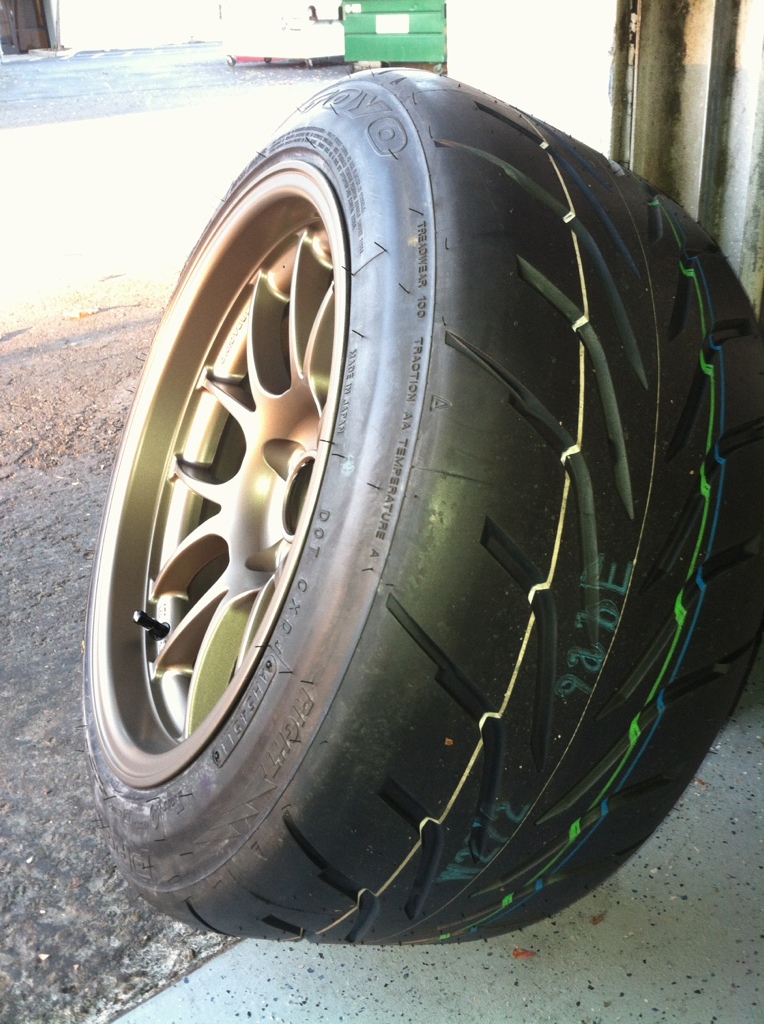 I took my time on the descent, preserving my brakes for the slow turns and emergencies, and the tires seemed to be able to resist trapping stones in the tread. In short, the Observe GSi-6 conquered Sasquatch Mountain.
I took my time on the descent, preserving my brakes for the slow turns and emergencies, and the tires seemed to be able to resist trapping stones in the tread. In short, the Observe GSi-6 conquered Sasquatch Mountain.
After 2,485 miles / 4,000 kilometres and a season of use I can say that the Observe GSi-6 has proven to be an exceptional tire for the mild winter conditions we get here on the west coast.
Its overall performance was consistent with regards to ride quality, traction, handling and braking no matter the conditions, and I would recommend it with confidence as a winter replacement tire for most light trucks and utility vehicles.
Contents
Introduction
Deriving criteria
Evaluate winter tires
Traction on ice and snow
Traction properties on asphalt
Comfort and economy
Considering summer tires
Coupling properties
Behavior
Comfort and economy
Conclusion
Toyo or Yokohama? Osaka or Tokyo? Which tires from these Japanese manufacturers are better in terms of reliability, safety and comfort? We armed ourselves with a year's worth of test results, ratings and reviews from ordinary drivers to dot the i's and decide which of the two famous brands deserves to be the best.
Any good tire must meet the criteria by which experts evaluate it. We have selected different seasonal models to see how they differ from each other. Our comparison for winter tires will be based on the following set:
Summer tires also have their own list of evaluation criteria:
If you think that some important points are missing here, this does not mean that we have missed something. Judging by the feedback and votes of users, each driver has his own needs and his own principle of testing tires for strength. And therefore, no, even the most carefully verified test, can be considered objective. Read this article and take advantage of the information below, but do not think that its purpose is to put an end to the question: which tires are better than Toyo or Yokohama. Our material is based on positions, ratings, votes, reviews and tests, primarily from the respected automotive magazine Za Rulem.
It is important for cold weather tires to keep the car firmly on the track on the slippery, and therefore the most dangerous sections of the road. Ice, packed snow, wet highways are the types of coverage where the quality of the tread is most severely tested. For measurements, we will take two models from each manufacturer: Toyo Observe Ice-Freezer and Yokohama IceGuard iG65 - both came out a year apart.
Ice, packed snow, wet highways are the types of coverage where the quality of the tread is most severely tested. For measurements, we will take two models from each manufacturer: Toyo Observe Ice-Freezer and Yokohama IceGuard iG65 - both came out a year apart.
Most of the user reviews of various resources contain the opinion that the Observe Ice-Freezer is a very quiet tire for the studded version, and this cannot but please the people who vote for it. Reports praised handling on snowy and icy roads, directional stability and a very low price. On our site, most people gave it five out of five stars.
In reviews of IceGuard iG65, car owners who have chosen this rubber note decent braking and acceleration qualities on ice, as well as strong studs that do not fall out in the first season. It handles well in slush and boasts comparatively quiet studding performance and low temperature resistance. Most of the users of our site gave her the highest rating - five stars.
The ability of the tire to maintain grip in specific conditions (primarily on snow and ice) we will determine through a series of tests for braking, handling, acceleration and much more.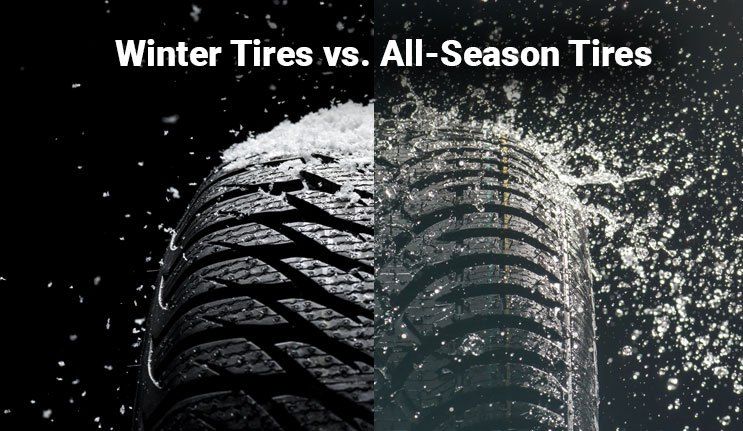
First, let's look at how the wheels behave in icy areas.
Stopping distance is an important component of safe driving in sub-zero temperatures, and the Yokohama IceGuard iG65 is clearly able to stop much better than the Toyo Observe Ice-Freezer: the former has 20.6 m, when rivals give out 26.8 m. This is serious, because the difference is 6 meters on a real road can be a decisive factor. On the ice lap, the IceGuard iG65 took the lead again, covering the distance in 20.8 seconds, while the Observe Ice-Freezer fell behind with 21.7 seconds. Yokohama's acceleration is faster again: their time is 7.5 s, Toyo's 11.0 s, which is a fairly average result. In handling, Toya finally outperforms the competitor: they scored 22.8 points, and Yokohama 21.0.
Now it's time for snow-covered tracks.
The braking distance of the IceGuard iG65 is only slightly shorter: 15.4 versus 15.7 for the rival. They also accelerate faster: 5.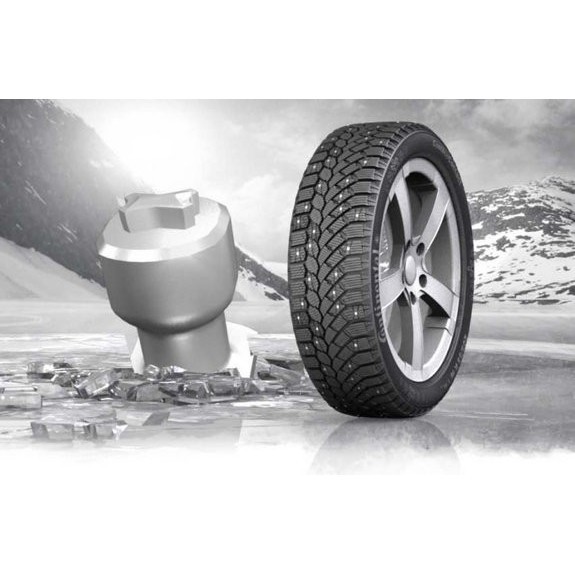 8 s, which is slightly less than 6.0 for the Observe Ice-Freezer. The controllability was assessed in three tests: during normal, active and emergency driving. All three tests showed Toya's advantage over Yokohama:
8 s, which is slightly less than 6.0 for the Observe Ice-Freezer. The controllability was assessed in three tests: during normal, active and emergency driving. All three tests showed Toya's advantage over Yokohama:
Normal driving: 15.0 - 12.0
Active driving: 7.0 - 6.5
Emergency maneuvers: 14.0 – 13.0
The IceGuard iG65 tires were able to pay it off in the snowdrift flotation test, where they left the opponent with a nose with a score of 33.8 points to 31.5. The directional stability test did not reveal a clear leader - both contestants scored 32.0 points.
To conclude the review of the ice and snow tests, we can conclude that the IceGuard iG65 generally outperforms its rivals on icy and snowy roads, losing only to them in handling lead. On ice, they feel much more profitable, but on snow, the gap between competitors is insignificant. Reviews of car owners in terms of braking qualities are absolutely fair. Handling cannot be called unsuccessful either - when compared with less resistant models, then Yokohama is pretty good against their background. Observe Ice-Freezer consistently perform better in any driving style, from normal to emergency. In terms of directional stability, the tires are equal. This is what people were talking about in reviews on Internet resources when they noted their outstanding handling qualities on “white” roads and good directional stability.
| Traction on ice and snow | ||
| Toyo | Yokohama | |
| On ice | ||
| Braking distance (30-5 km/h), m | 26.8 | 20.6 |
| Ice lap time, s | 21.7 | 20.8 |
| Acceleration (0-30 km / h), from | 11.0 | 7.5 |
| Handling, score | 22.8 | 21. 0 0 |
| In the snow | ||
| Braking distance (40-5 km/h), m | 15.7 | 15.4 |
| Acceleration with TCS (0-40 km/h), from | 6.0 | 5.8 |
| Handling (normal driving), score | 15.0 | 12.0 |
| Manageability (active driving), score | 7.0 | 6.5 |
| Controllability (extreme maneuvers), score | 14.0 | 13.0 |
| Permeability, score | 31.5 | 33.8 |
| Course stability, score | 32.0 | 32.0 |
The asphalt pavement revealed no surprises. The IceGuard iG65 tires showed shorter stopping distances than the Observe Ice-Freezer in two braking conditions. On the wet surface, they showed a result of 20.1 m against 21.6. On a dry track, the data also do not differ much: 33. 5 and 34.7 in favor of Yokohama. As well as tests on "white" surfaces, both participants showed equal data on exchange rate stability - 21.0 points.
5 and 34.7 in favor of Yokohama. As well as tests on "white" surfaces, both participants showed equal data on exchange rate stability - 21.0 points.
On the pavement, Ekohama, albeit not by much, wins the standings from the opponent. If we compare the test results with the reviews of ordinary drivers, then everything here still seems to be true: both competitors are doing their job well.
| Traction on asphalt | ||
| Toyo | Yokohama | |
| Braking distance on wet surface (60-5 km/h), m | 21.6 | 20.1 |
| Braking distance on a dry surface (80-5 km/h), m | 34.7 | 33.5 |
| Course stability, score | 21.0 | 21.0 |
In terms of comfort, the situation was not in favor of Yokohama. Toy slightly surpassed them in the noise in the cabin (19.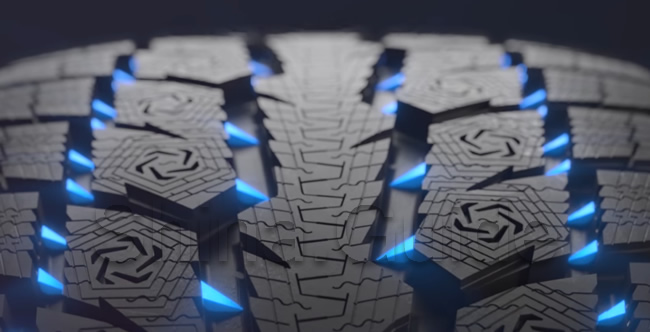 5 vs. 18.0) and significantly in smoothness (16.0 vs. 12.0). It's safe to say that the Observe Ice-Freezer rides much smoother and quieter than the IceGuard iG65, which doesn't mean it's too loud. Reviews on the network note that both are good in terms of comfortable work, even if Yokohama loses a little in terms of smoothness.
5 vs. 18.0) and significantly in smoothness (16.0 vs. 12.0). It's safe to say that the Observe Ice-Freezer rides much smoother and quieter than the IceGuard iG65, which doesn't mean it's too loud. Reviews on the network note that both are good in terms of comfortable work, even if Yokohama loses a little in terms of smoothness.
Measurements of fuel consumption did not reveal a significant difference between manufacturers. At a speed of 90 km / h, both tires showed the same result of 6.5 l / 100 km. But as soon as they slowed down to 60 km / h, Yokohama reduced their “appetite” to 4.4 l / 100 km, and became leaders in the test for efficiency. The network message writers who chose them made the right decision in terms of saving money.
| Winter tire comfort and economy | ||
| Toyo | Yokohama | |
| Noise in the cabin, score | 19.5 | 18.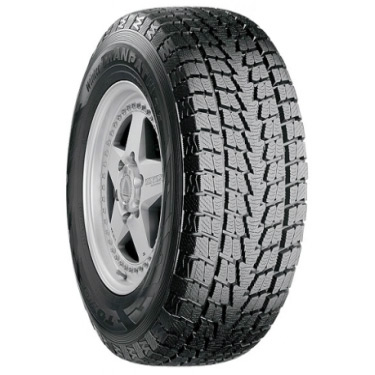 0 0 |
| Smooth running, score | 16.0 | 12.0 |
| Fuel consumption at 90 km/h, l/100 km | 6.5 | 6.5 |
| Fuel consumption at 60 km/h, l/100 km | 4.6 | 4.4 |
Conditions are less severe in summer, but that doesn't mean that tires should be spared. The evaluation of the rubber quality will be carried out on wet and dry asphalt, but the exercises here are more dynamic: the “repositioning” test, extreme maneuvers and directional correction at high speed.
The Proxes Sport from Toyo and BluEarth-A AE‑50 from Yokohama, which also came out a year apart, will help us choose the best manufacturer.
About the BluEarth-A AE‑50 tires, users write in their reviews that this is an extremely balanced tire with a high level of acoustic comfort. It is very soft, predictable in corners and sharp lane changes. In addition, according to the results of numerous reports, the tire has good wear resistance, and for many users this quality has become one of the main reasons to vote for it.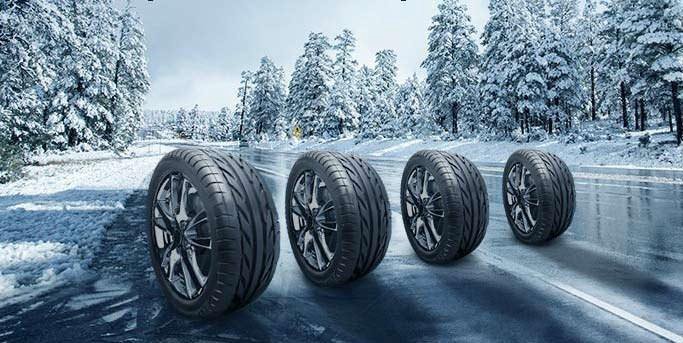 Most people on the site rated it 4/5, but there were also those who gave it 1 star. How right they were, our tests will show.
Most people on the site rated it 4/5, but there were also those who gave it 1 star. How right they were, our tests will show.
Reviews of the Proxes Sport are full of satisfied owners who note low braking distances on pavement, both wet and dry. It holds the road well and does not break into drifts when cornering. Judging by the reports, during a trip with these tires, you can hardly hear the operation of the wheels, the car drives quietly and very smoothly.
Traditionally, the assessment of grip quality in summer is given on wet and dry surfaces.
Toyo Proxes Sport had a shorter wet braking distance of 25.2 m. The BluEarth-A AE‑50 fell behind them, but not by much, at 25.8 m. collisions with an obstacle, the BluEarth-A AE‑50 showed great speed on wet roads - 68.5 km / h, which also does not distinguish them much from the Proxes Sport, which have 68.0 km / h.
Dry braking showed a slightly different picture. Tires Toya slowed down with a score of 40. 4 m, and Yokohama - 42.8. Therefore, the gap between them is somewhat larger than on wet asphalt. On the “rearrangement” of 70.5 for Proxes Sport, 70.6 for BluEarth-A AE‑50 – there is almost no difference, and if there is, it is purely nominal.
4 m, and Yokohama - 42.8. Therefore, the gap between them is somewhat larger than on wet asphalt. On the “rearrangement” of 70.5 for Proxes Sport, 70.6 for BluEarth-A AE‑50 – there is almost no difference, and if there is, it is purely nominal.
Yokogama didn't excel much here. Toy wins them in braking tests, but loses in the “rearrangement”, but not too much. If we compare the reviews of people on the Internet and the results of practical tests, then the reports of low stopping distance and fast response of the Proxes Sport are confirmed by us.
| Grip properties of summer tires | ||
| Toyo | Yokohama | |
| Wet asphalt | ||
| Braking distance (80-5 km/h), m | 25.2 | 25.8 |
| Rearrangement, km/h | 68.0 | 68.5 |
| Dry asphalt | ||
| Braking distance (100-5 km/h), m | 40. 4 4 | 42.8 |
| Rearrangement, km/h | 70.5 | 70.6 |
In this section, we evaluate handling, directional stability and hill climbing.
The BluEarth-A AE‑50 handles significantly better in the wet, with 60 points from the experts, while the Proxes Sport scored a modest 42. On the dry, Yokohama wins with 42.0 points and Toya loses with 36. ,0. Course stability: the result of measurements of 37.5 and 32.5 points in favor of the same manufacturer. On a dirt road, both contestants climb with the same success: 5.0 points each.
There is nothing to argue and doubt here - Yokohama is a clear winner in three out of four tests. We have not identified the impressive handling qualities of Toy from online reviews, because she showed a fairly average level. However, it all depends on who the author of the message compares the manufacturer with. Yokohama has shown that the positive reviews about her are more than fair, and the people who gave her 1 star are most likely overexcited.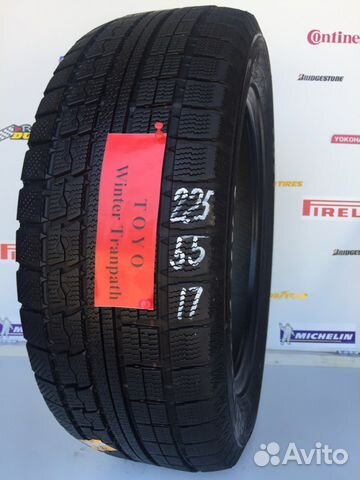
| Summer tire behavior | ||
| Toyo | Yokohama | |
| Handling on wet pavement (extreme maneuver), score | 48.0 | 60.0 |
| Handling on dry pavement (extreme maneuver), score | 36.0 | 42.0 |
| Course stability and control adjustment at high speed, score | 32.5 | 37.5 |
| Overcoming the rise on a dirt road, score | 5.0 | 5.0 |
Now let's look at competitors in terms of maintaining comfort and fuel efficiency.
In terms of interior noise quality and ride quality, the Yokohama BluEarth-A AE‑50 outperforms rivals with a score of 21.0 points for both. In terms of acoustic comfort, these tires were among the quietest for the entire test. Proxes Sport only has 19. 5 points for both indicators. In terms of fuel consumption, Yokohama again has an advantage: 6.2 l / 100 km at a speed of 90 km / h and 4.3 l / 100 km at a speed of 60 km / h, which is slightly lower than that of Toya, which has 6.4 liters /100 km at 90 km/h and 4.5 l/100 km at 60 km/h. It is worth noting that the efficiency of the BluEarth-A AE‑50 turned out to be the highest among all twelve participants.
5 points for both indicators. In terms of fuel consumption, Yokohama again has an advantage: 6.2 l / 100 km at a speed of 90 km / h and 4.3 l / 100 km at a speed of 60 km / h, which is slightly lower than that of Toya, which has 6.4 liters /100 km at 90 km/h and 4.5 l/100 km at 60 km/h. It is worth noting that the efficiency of the BluEarth-A AE‑50 turned out to be the highest among all twelve participants.
Their manufacturer is once again celebrating victory, this time as the creator of the most economical and smoothest product. This is not to say that the reviews on the forums are not fair. In general, both tires show a fairly low noise level and behave very smoothly, so here the reports are completely true.
| Comfort and economy summer tires | ||
| Toyo | Yokohama | |
| Silence in the cabin, score | 19.5 | 21.0 |
| Smooth running, score | 19. 5 5 | 21.0 |
| Fuel consumption at 90 km/h, l/100 km | 6.4 | 6.2 |
| Fuel consumption at 60 km/h, l/100 km | 4.5 | 4.3 |
It's time to sum up the comparison and choose tires.
Yokohama showed excellent results and outperformed the rival in most of the tests on the "white" roads. It brakes better, accelerates better, passes the ice circle faster and breaks deep snow more efficiently. The only thing she was beaten in was handling and comfort indicators, but even there the gap between the tires for the most part is not so large as to strictly scold Yokohama for this. Its main failure is the smoothness of the ride, here it does not shine at all.
Toyo also fail in summer tire tests, with different results in each block. In terms of traction, they are good in some exercises, but blundered in others. In terms of handling, it does show fairly average results and cannot compete with the BluEarth-A AE‑50 in any way. They were bypassed both in terms of economy and comfort.
They were bypassed both in terms of economy and comfort.
With some reservations, but we can quite unequivocally state that, according to the results of measurements, Yokohama tires defeat Toya. If you do not agree and, from your experience, are ready to give preference to another contestant, then this situation is in the order of things. As we have already said, the rating has an extremely subjective connotation, and many authors of reviews on our site will not agree with us. Go to the reviews section yourself and read people's opinions on these and other models.
Moscow and Moscow Region 8 (495) 215-20-68
Regions of the Russian Federation 8 (800) 555-20-68
Tire Toyo Observe Ice-Freezer
Brand
Toyo
Model name
Observe Ice Freezer
Season Tire replacement: above +7°С - summer, below +7°С - winter. ">
">
Winter
spikes Helps to get under way and shorten the braking distance on slippery surfaces.">
Yes
Vehicle type
Car / SUV
Tread pattern Responsible for drainage, grip, braking.">
Directional symmetrical
Diameter
14 / 15 / 16 / 17 / 18 / 19 / 20 / 21
Speed index
H (up to 210 km/h) / T (up to 190 km/h)
Buy tires Toyo Observe Ice-Freezer
Rating 4. 8
8
22 customer reviews
5.0
The user chose to hide their data
LADA 4х4 Niva 2020 1.7 8V 2121 3d
User experience: less than a month
October 03, 2022
5.0
Kozelsky Alexander Viktorovich
HYUNDAI Creta 2020 1.6 I
User experience: less than a month
October 02, 2022
5.0
Gorbarets Natalia
User experience: less than a month
Advantages: Haven't changed shoes yet, so I can't comment on the tires. Of the advantages, a good price and fast delivery, a very pleasant and polite driver who helped with loading into my car)
September 30, 2022
5.0
The user chose to hide their data
RENAULT Logan 2018 1.6 II SD Sedan
User experience: less than a month
August 05, 2022
5.0
Kapachinskaya Julia
User experience: less than a month
Advantages: I bought it at the end of winter, traveled a little and almost did not find ice, but according to the first sensations, everything is as expected, I like everything.
Comment: Quiet enough tires for studding even on clean pavement in the last week of spring. I didn’t even notice small patches of snow in the yard, I drove confidently and boldly jumping over these islands! Next winter I will look at the behavior in difficult areas of my favorite frozen courtyard puddles. I believe and hope that the tenacity for the ice crust will be at a high level.
I didn’t even notice small patches of snow in the yard, I drove confidently and boldly jumping over these islands! Next winter I will look at the behavior in difficult areas of my favorite frozen courtyard puddles. I believe and hope that the tenacity for the ice crust will be at a high level.
June 22, 2022
5.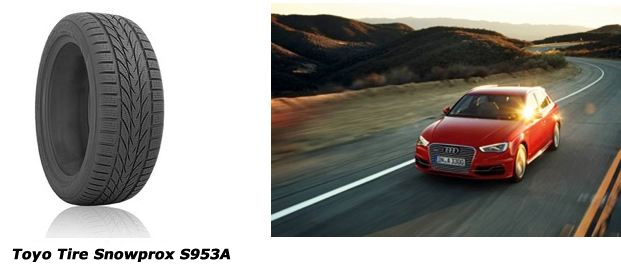 0
0
Sergeenko Yuri
VOLVO S60 2006 2.4 D (2004-2010) R Sedan
User experience: several months
Advantages: Quiet for spikes, stable
Disadvantages: did not find
Comment: I drove both in the snow and in the mud and the tires did not fail, I drove both for summer, and stable 6000km lost 3 spikes but thinking because of the metal threshold at the entrance to the garage. And so the tires are good and high-quality, although they are made in Malaysia.
June 02, 2022
5.0
Matyushin Sergey Viktorovich
SEAT Leon 2013 1.4TSI 5F Hatchback 3d SC
User experience: few months
05 April 2022
5.0
Dmitry
MITSUBISHI Grandis 2008 2.4 NA0W MPV
User experience: several months
Advantages: Good handling on asphalt, excellent behavior on ice, not noisy.
Disadvantages: No
Comment: I really liked that this model does not have a lot of spikes. But at the same time they are located so that the model does an excellent job with any road surface. For my van, great tires!
05 April 2022
4.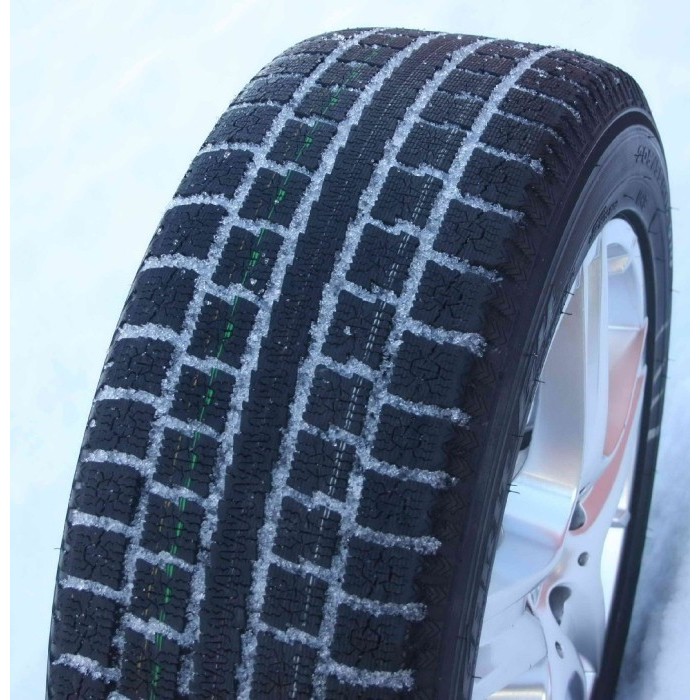 0
0
Konstantin
CITROEN Berlingo 2021 1.6 HDi B9 Multispace
User experience: several months
Advantages: Holds direction well on the ice, doesn't drift. In the snow on the front-wheel drive, everything is adequate and predictable. On the brakes - I drive carefully, without recklessness, so it's hard to single out something. Rutting is not felt
Disadvantages: The first thousand kilometers are very, very noisy, it seemed as if the bearings in the hub were buzzing, although the car was new. This point must be taken into account.
Comment: when buying this rubber, you must definitely pay attention that during the break-in it will be very noisy.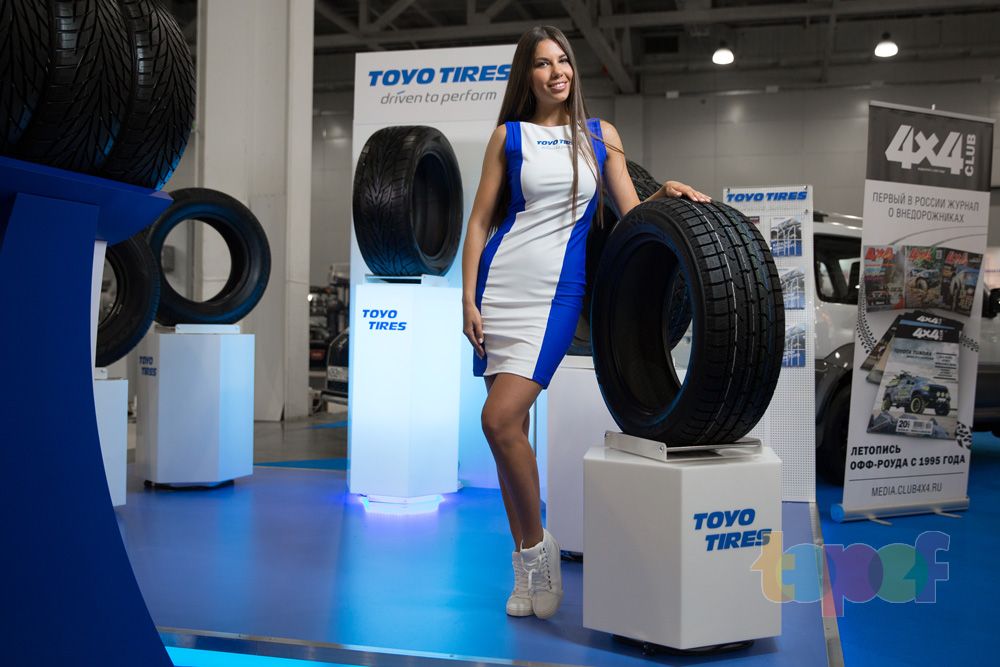 But in terms of safety, very adequate tires.
But in terms of safety, very adequate tires.
April 02, 2022
4.0
Dmitry
MERCEDES C-Class 2012 180 Kompressor S204K T-Modell
User experience: several months
Advantages: Normal tires
Disadvantages: Noisy
Comment: I buy this model not the first time, normal rubber, but there are better
February 26, 2022
Toyo Observe Ice-Freezer tires from real owners.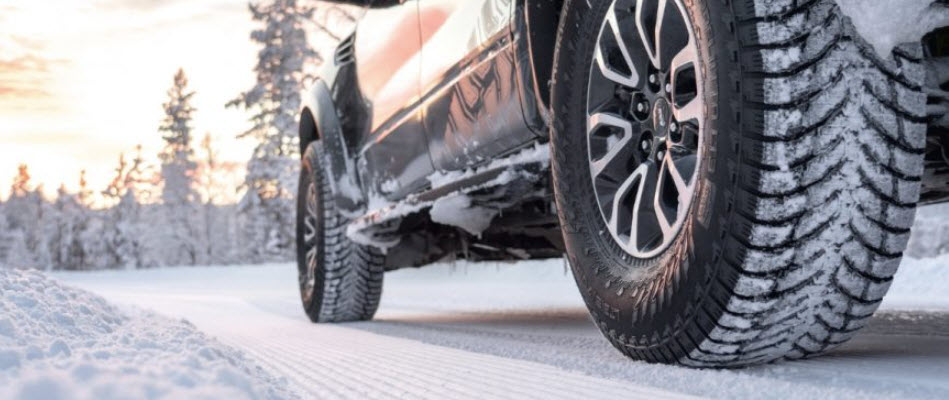 Opinions of owners on operation - advantages and disadvantages. Toyo Observe Ice-Freezer tires - the pros and cons of using.
Opinions of owners on operation - advantages and disadvantages. Toyo Observe Ice-Freezer tires - the pros and cons of using.
BlackTyres is an online car tire store with a huge selection of brands and models. In order not to get lost among the many commodity items, as well as to get detailed information on each model, there is a section on our website with real reviews from the owners of such tires. Reviews provide an opportunity to get acquainted not only with the characteristics declared by the manufacturer, but also with the real experience of their use by buyers.
If you have also used Toyo Observe Ice-Freezer tires, we offer you the opportunity to share your impressions with other car owners. Indicate the most complete information, both positive and negative, if any. We would appreciate the following information:
